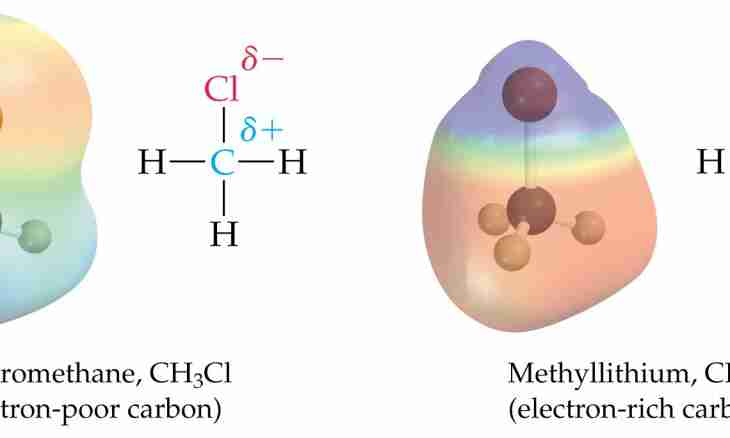The polarity of molecules is the asymmetrical distribution of electronic density arising because of various electronegativity of the elements which are a part of a molecule. In other words, when one element kind of attracts to itself an electron of another, along the invisible axis connecting the centers of their atoms. How it is possible to define whether any given molecule is polar?
Instruction
1. First of all look at a molecule formula. It is easily possible to understand that if it is formed by atoms of the same element (for example, N2, O2, Cl2, etc.), then it is a nepolyarna as electronegativity of identical atoms is also identical. Therefore the shift of electronic density to one of them in this case cannot be.
2. If molecules consist of different atoms then it is necessary to present its structural form. It can be both symmetric, and asymmetrical.
3. In case the molecule is symmetric (for example, CO2, CH4, BF3, etc.), the molecule is unpolar; if it is asymmetrical (because of existence of not coupled electrons or not divided couples of electrons), then such molecule polar. Characteristic examples are H2O, NH3, SO2.
4. And how to be when in a symmetric unpolar molecule one of side atoms is replaced with any other atom? Take, for example, the methane molecule in a structural look representing a tetrahedron. It is a symmetric figure and, apparently, its not polarity should not change, the symmetry plane still passes through the central atom of carbon and that atom which replaced hydrogen.
5. As electronegativity of an element - "substitute" differs from electronegativity of hydrogen, in a molecule there will be a redistribution of electronic density and, respectively, its geometrical form will change. Therefore such molecule will become polar. Characteristic examples: CH3Cl (chlormethane), CH2Cl2 (dichloromethane), CHCl3 (trichloromethane, chloroform).
6. And if the last atom of hydrogen also is replaced with chlorine, then the formed phenoxin (tetrachloride carbon) will become a symmetric unpolar molecule again! Than more difference in electronegativity of the elements making an asymmetrical molecule especially polar will be communication between these elements (and, respectively, a molecule).

